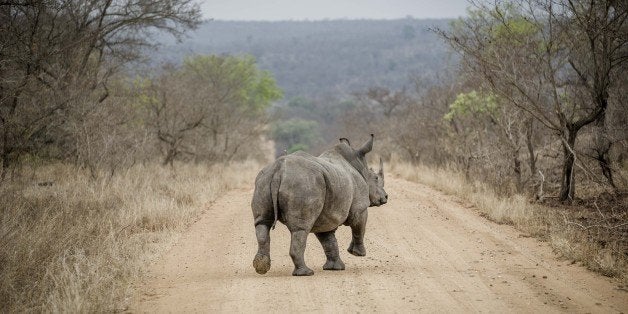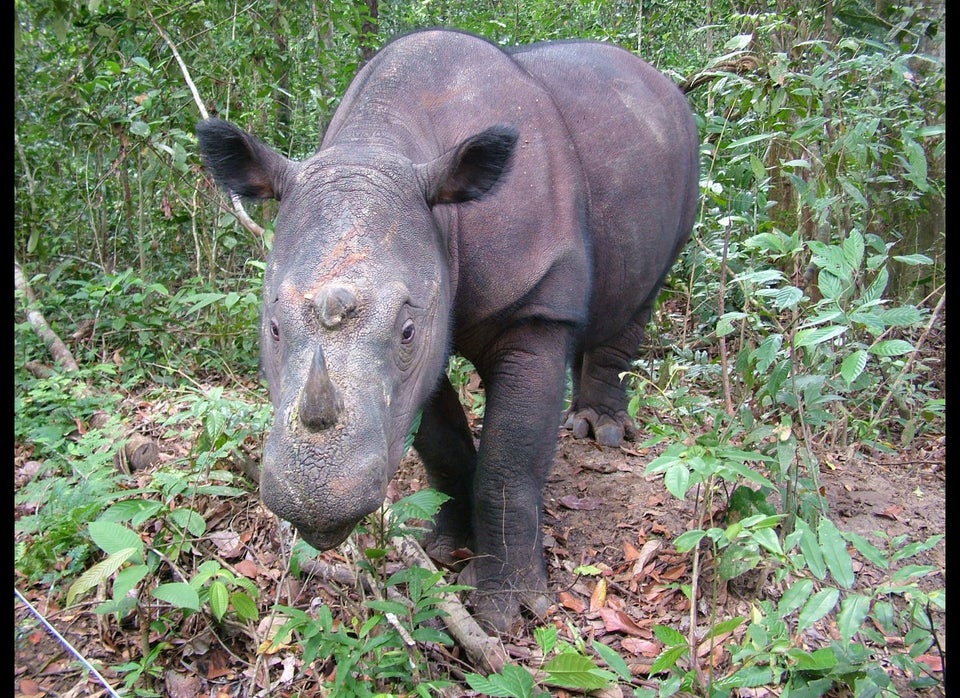
By Ed Stoddard
JOHANNESBURG, Jan 2 (Reuters) - South Africa lost a record number of rhinos in 2014 as big animals across Africa were relentlessly poached to meet rising demand for horn and ivory in newly affluent Asian countries or to provide meat to fighters in the bush.
From South Sudan, where conservationists say elephants are being slain by both government forces and rebels, to South Africa, where more than three rhinos are poached every day, there is an arc of illegal animal slaughter across the region.
South Africa is the center of the rhino crisis as it is home to close to 20,000, or over 90 percent, of the world's population of the animals.
Government figures for 2014 show that by mid-November 1,020 of the animals had been killed for their horns.
That tops the previous record of 1,004 from 2013 and experts say it will probably hit at least 1,200, an almost four-fold increase over 2010, when 333 were killed.
Pelham Jones, chairman of the Private Rhino Owners Association, told Reuters that his group believed that 1,171 rhinos had been illegally killed in South Africa by mid-December.
"It is a very safe but sad assumption that we will exceed the 1,200 mark in 2014," he said.
There is legal hunting by permit of rhino, elephant and other big game in South Africa. But the numbers refer to illegal killings and trade in rhino horn is prohibited globally.
Rhino horn is coveted in Vietnam and China as an ingredient in traditional medicine. Conservationists say it fetches up to $65,000 a kilo on the street, making it more valuable than gold.
The toll often rises in December, possibly because poaching syndicates want to stock up ahead of the Chinese New Year in February.
Many of the rhino poachers in South Africa come from neighboring Mozambique, one of the world's poorest countries where villagers are tempted by the promise of quick money.
Poaching centers on South Africa's flagship Kruger National Park, which borders Mozambique and is a major tourist draw, making the issue a state priority, with the Department of Environmental Affairs saying in November that over 340 arrests had been made so far in 2014 in connection with the scourge.
Rhino horn, which only weighs a few kilos, is relatively easy to smuggle and its price has spawned a web of routes, with 16 members of a syndicate suspected of involvement in the trade arrested late last year in the Czech Republic.
TIPPING POINT
Final estimates for elephant poaching across Africa in 2014 will not come out for some time, but conservationists say the number of the animals being slain for ivory -- valued for decorative purposes in China -- is likely exceeding the number being born.
This suggests a "tipping point" of population decline is in prospect for Africa's 500,000 elephants.
"2015 will be key, possibly the most significant yet in the battle to save the world's iconic animals," said Richard Thomas, spokesman for TRAFFIC, a wildlife trade monitoring network.
"If the resources now being directed at this fail to put a big dent in the poaching figures, we need to find out what went wrong and why and amend our approach," he told Reuters.
At least 20,000 elephants were poached annually from 2011 to 2013, according to the Convention on International Trade in Endangered Species (CITES), a U.N.-linked agency.
Killing elephants and smuggling ivory from their tusks is a trickier business than rhino poaching and selling horn. Elephants are bigger, warier, and more dangerous, and their tusks can reach lengths of a meter or longer.
A CITES report two years ago noted that for smuggled ivory, "Trade patterns have shifted to Indian Ocean seaports," and the sheer quantities of cargo moving through Asian ports "makes detection of concealed ivory a severe enforcement challenge."
There have also been allegations of official complicity. In November, Tanzania denied allegations by a campaign group that Chinese officials smuggled out large amounts of illegal ivory in diplomatic bags during a state visit by President Xi Jinping.
Foreign Minister Bernard Membe acknowledged that Tanzania -- where conservationists say 10,000 elephants were killed in 2013 -- was among the world's major sources of smuggled ivory, but denied that the Tanzanian and Chinese governments were involved in the internationally banned trade.
In Africa's newest state, South Sudan, the current onset of the dry season may trigger more poaching in a country where the elephant population has fallen from 80,000 to 2,500 over the past four decades.
The U.S.-based Wildlife Conservation Society (WCS) says that eight of the almost 30 elephants it had radio-collared in the country for monitoring purposes were poached last year amid fighting between government forces and rebels.
Aside from poaching for illicit ivory sales, elephants and other animals are also being killed by both sides for their meat, WCS said. (Reporting by Ed Stoddard; Editing by Giles Elgood)

